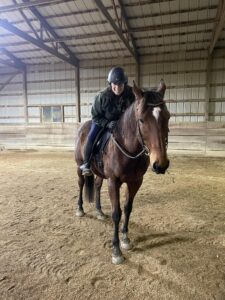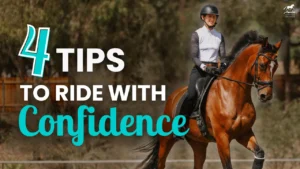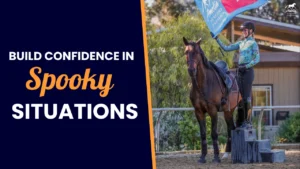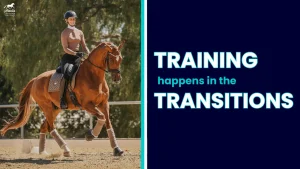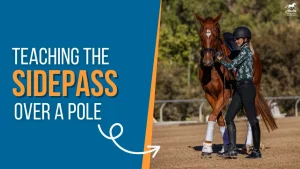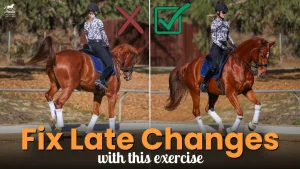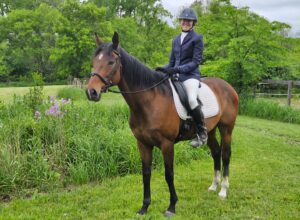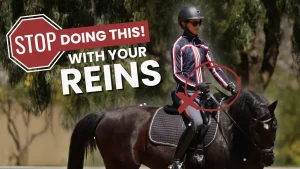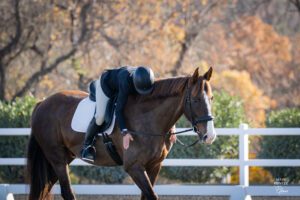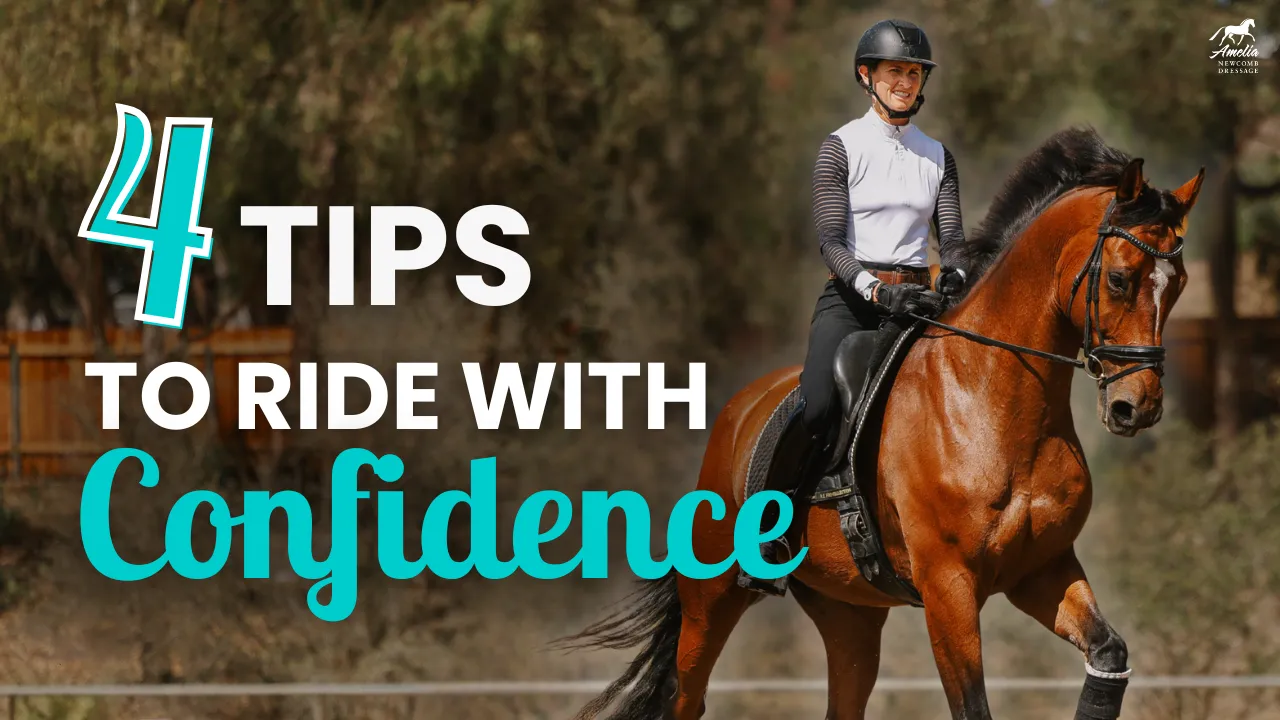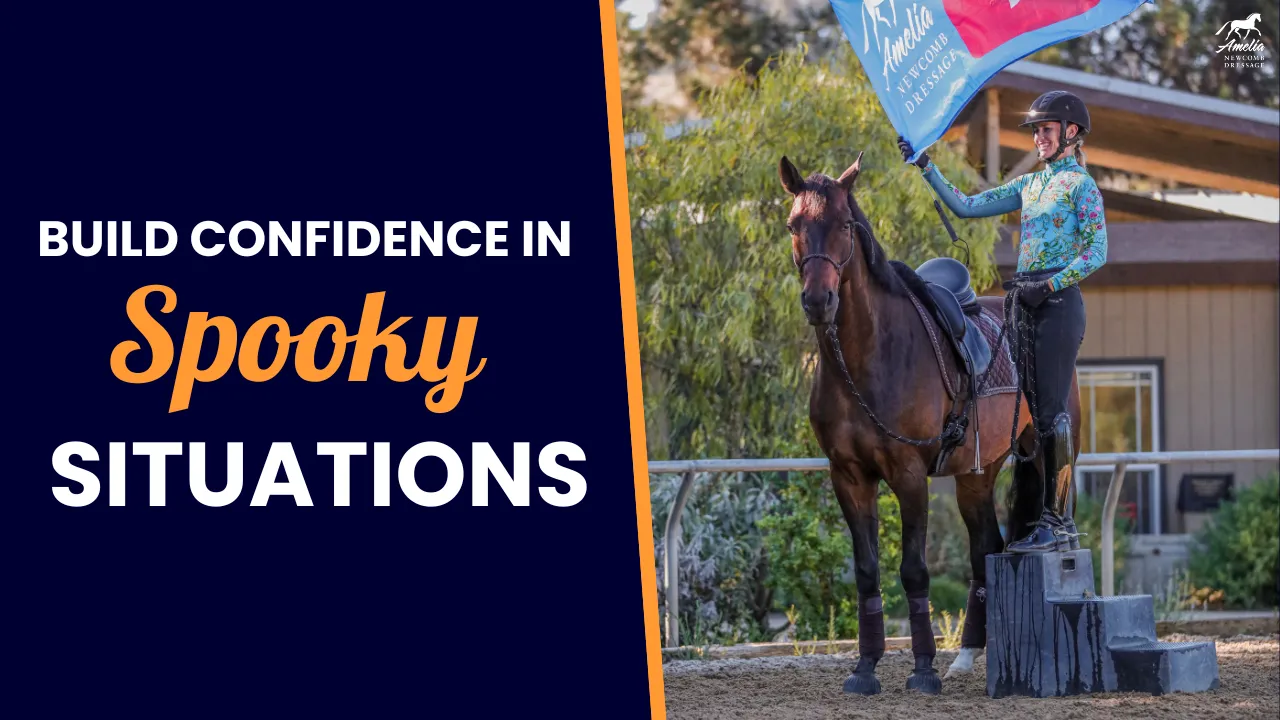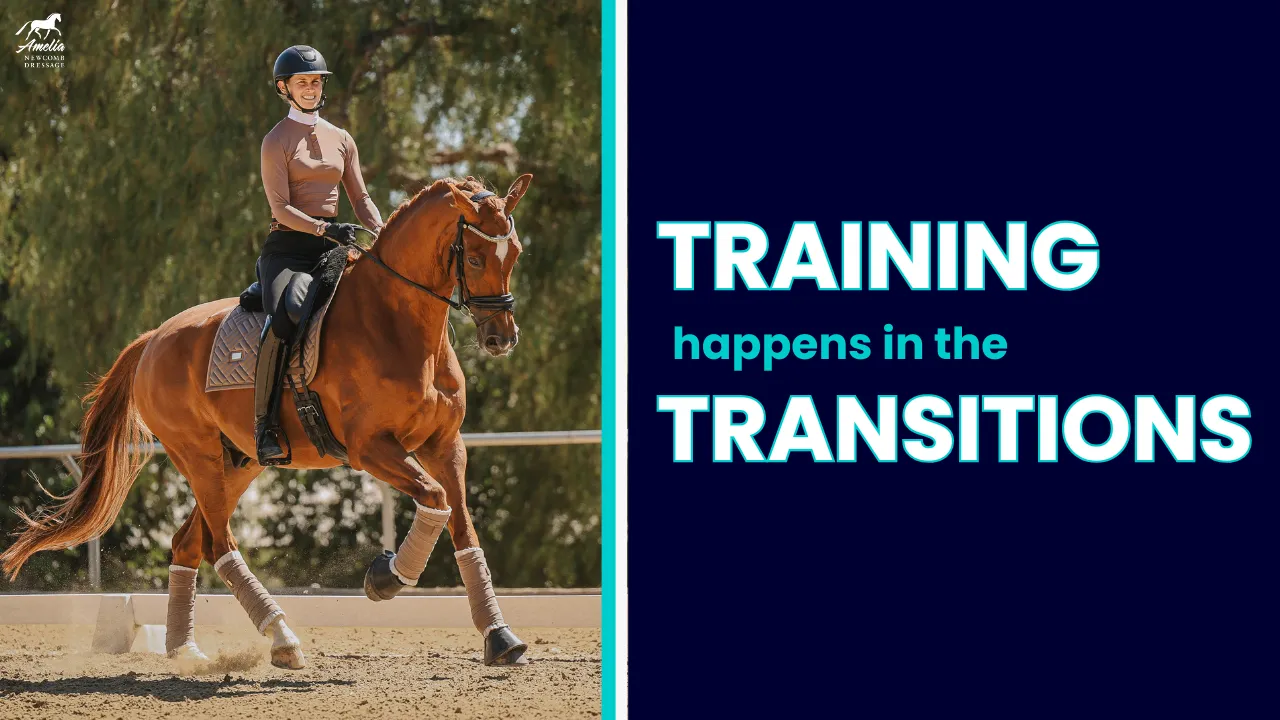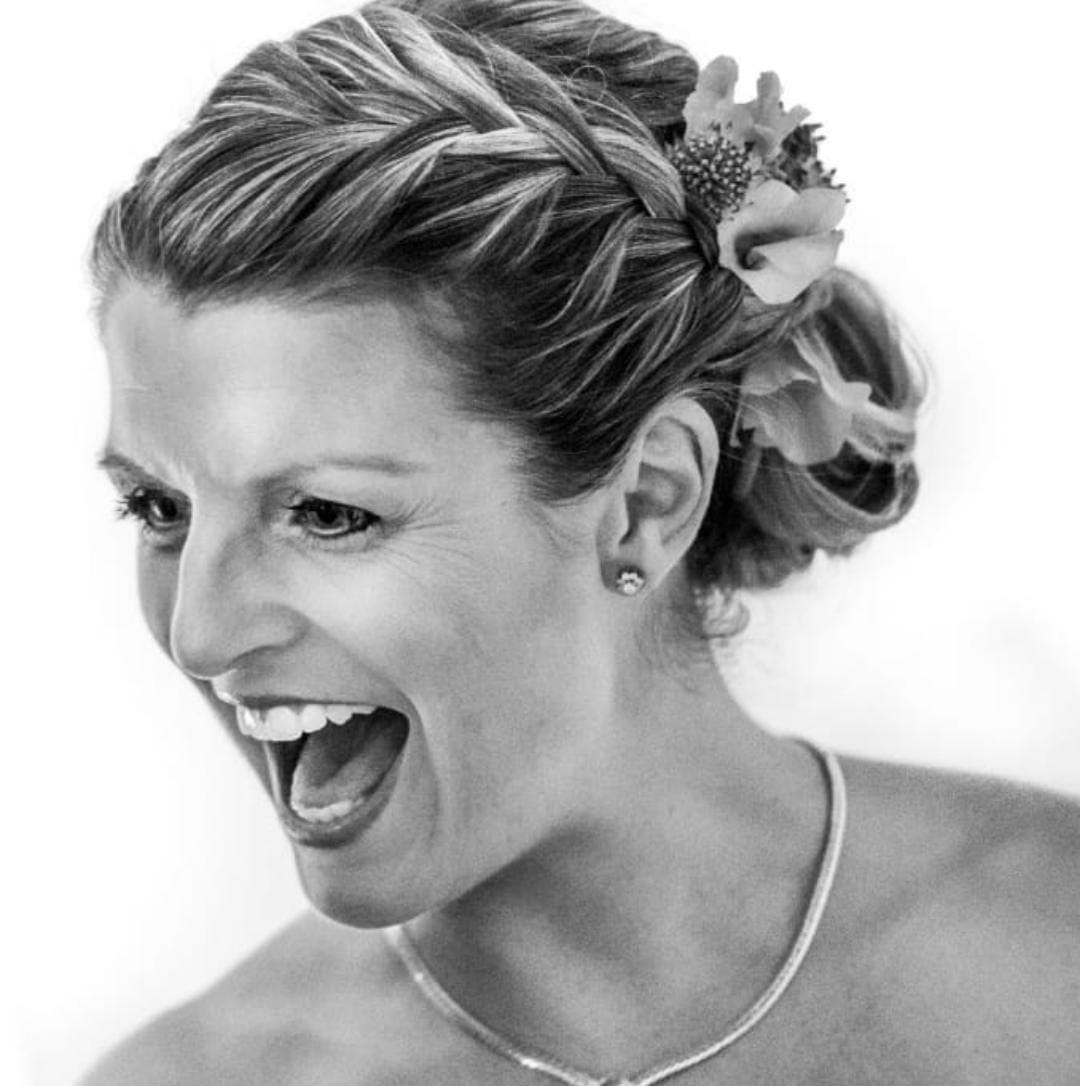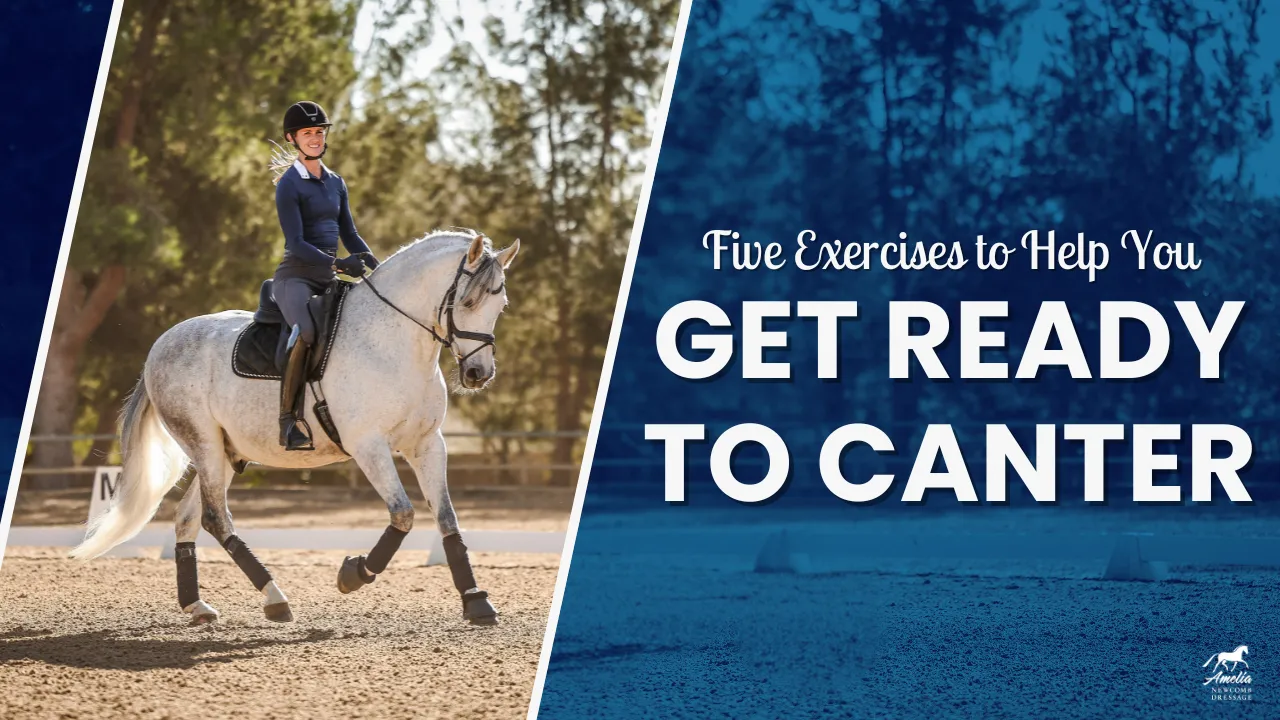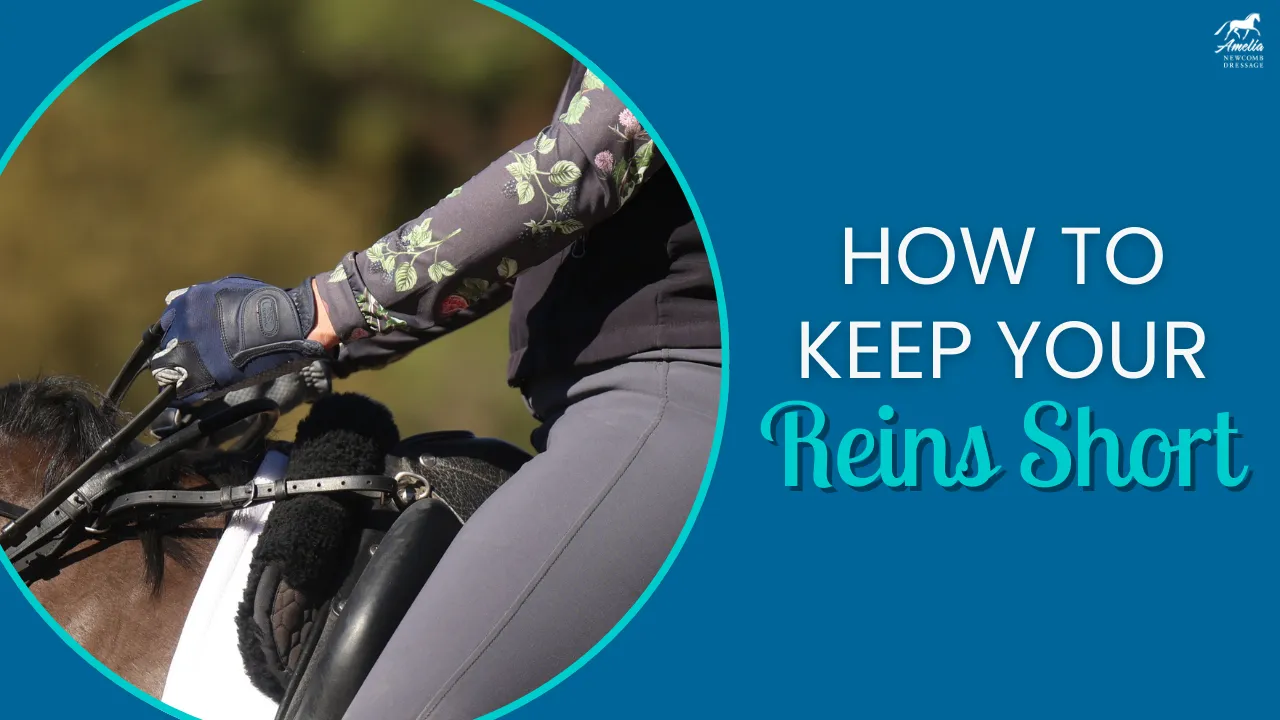This was an original article designed especially for Heels Down Mag.
How can I tell if my horse is actually ’round’ and not just curling his head in?
This is a great question! There are a few different ways, so try them out to see which works best for you depending on what type of learner you are.
Before that though, it’s important to know exactly what we are looking for when determining if our horse is round. When a horse goes round and connected, their pelvis tips under, allowing the hind legs to come more under their body, their back lifts, their topline muscles become supple and elastic, and their shoulders raise up thus allowing the arch in the neck that we attribute to ’roundness’. But it’s important to look at so much more than the neck. You have to look at the whole body or else as you mentioned, the horse might just be ‘curling their neck in’. When curling happens, their back is dropped, and their hind legs go out past the point of their buttocks, and often, the nose goes behind the vertical regardless of the amount of contact in the hand.
And this is just what the horse LOOKS like, what it FEELS like, is that everything becomes easier and more balanced. That at any moment you could ask for anything and your horse would easily and harmoniously act on your aids. This is a very simplified version of what ‘connection’ feels like, there is a famous expression from Kyra Kyrklund that describes the feel: “It is a bit like explaining how strawberry jam tastes – it is easier if you have eaten it before or even tasted a strawberry.”. But you’ll know it when you feel it because it’s like riding magic.
But until you are confirmed on that ‘magic’ feeling, here are some tips to help you.
Mirrors
Instantaneous feedback of your position, and of course, what your horse looks like. If you’re not sure about the feel yet, mirrors are a great way to glance over and check yourself.
Video
Being able to watch yourself and analyze your own work after the fact can sometimes be better than a lesson! You can see what is going wrong and then make a game plan of exactly what you need to focus on for your next ride.
Weight in your hands
Remember that what you feel in your hand is a reflection of what is happening in their body. If your hands are stiff, they are stiff. If there is a lot of weight in your hands, they are on the forehand. If there is no weight in your hand/they wont stretch to the contact, that means that they are hollow in their back. You are looking for that goldilocks feeling in your hand. When you can get that, you’re closer to being connected and round.
Easy of go, stop, left and right
Remember, roundness is a result of having both a steady, self maintaining rhythm, and having suppleness through the body. That means, your horse is is front of your leg, listens to your slowing aids, can bend easily both directions, once they have all that, they naturally start to go connected and round. If one of those 4 things is hard, you aren’t in the right balance and/or don’t have enough suppleness for your horse to be round.
Transitions
When you’re riding and you think your horse is round, ask for a transition to another gait and notice what happens with your horse. If your horse pops his head up or the transition is delayed (or doesn’t happen!) this means that they were probably curling not in true connection.
Starting on the ground
By far the easiest way to teach a horse and to teach yourself the timing and feel of roundness is by starting on the ground. This way you can watch how your horse’s body changes and you can get familiar with the feeling in your hands when it’s right. Plus it’s way easier on your horse to lift their back when they don’t have to worry about balancing you!Remember, that roundness and connection is in degrees. The roundness we need for first level is very different than the roundness we need for the Grand Prix. It takes years to develop the topline muscles to support the upper level movements, so be patient, give yourself grace, and keep working on improving your rhythm and suppleness.
